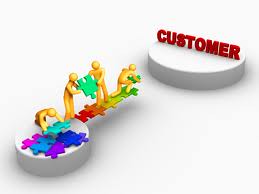Defining customer-driven product development
Customers no longer play a passive role but are now recognized as collaborative partners in the product development process. Today’s fast paced market and fierce competition demand that product development teams have a good understanding of customer needs. A customer-driven framework therefore emphasizes the central role that customers play in the product design and development process.
To produce better products at lower cost and with shorter delivery time to market, many businesses have embraced a customer-driven approach to product development. Volvo is one example of a company that recognized the importance of social product development and fully embraced the concept of customer participation in the design of a new truck for the construction industry. The rapid shift from customers as spectators to customers as central components of product innovation is fostered by a growing need to create customized products. In the article “Customer-Driven Production” by the Volvo Truck Corporation, Gunnar Eliasson, marketing manger for the construction truck division, in Europe, highlights this point: “We can see that a more segmented market is developing, in which fewer customers are satisfied with accepting a standard truck.”
Customer-driven method: Structure the conversation and get the work done
Implementation of a more customer-driven approach is a complex process that requires not just customers, but the collaboration and participation of all stakeholders. In this same article, Jeffrey Liker, well known professor from the University of Michigan, describes the importance of team collaboration and effective communication across departments. He explains how Volvo specialists “work together freely across several departments and areas, all so as to be able to better meet customer demands”. Liker asserts that this type of approach “promotes constant learning about the production processes and understanding of how product development is conducted”. He compares this to a more traditional model of product development where work is conducted in silos and decisions are “taking place in separate cells where each development group does its utmost within its own specific area – but with very little exchange of experience between the various departments.”
As companies recognize the need to become more engaged with their customers and look for ways to promote better collaboration across teams, they need the right toolset to better meet shifting marketplace needs. Gunnar Eliasson reiterates this need: “Most of our customers influence the design so that the truck matches their individual requirements, this approach requires time together with customers” and a “method for identifying customer requirements and then transforming them into technical specifications.” Volvo products are truly ‘customer-driven’, no pun intended.
Organizations use OneDesk for customer-driven production
New customer-driven technologies provide organizations with the ability to capture customer ideas, elaborate on requirements and pipe them directly into the product development process. OneDesk is business community software made to facilitate product development collaboration. It is the first social business application that connects the customer to the product management process. OneDesk offers built-in social collaboration tools which facilitate customer engagement, such as, discussion forums, blogs, chat, idea voting, and more. With this software, businesses can adopt a more customer-driven approach, and can efficiently communicate with their customers, and get their products to market quickly.
Sign up for a free account and try OneDesk today.
